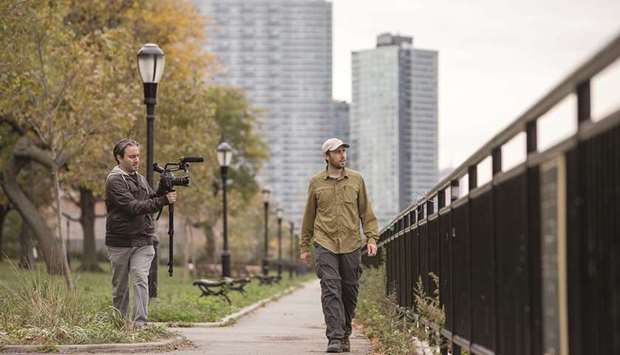Many people believe the best way to really experience a new city is by walking. On foot, you can get intimate with the streets, shops and locals; the sounds, smells and tastes.
But Matt Green has taken that philosophy one step further than most. In the sprawling metropolis of New York, he’s resolved to walk every street, every path, every park and every public square in the city. The estimated distance is 12,800 kilometres – roughly the distance from Berlin to Tokyo.
Green has been on the road for seven years now, and every day he walks a few more kilometres and city blocks. He sleeps on friends’ sofas, sometimes looking after their pets in return.
What began as a way to escape the boredom of his desk job as a civil engineer has turned into a long-term study of this city of 8.5 million people. Green meets people, takes photos and reads about the history of the city. And he records everything on his blog, “I’m Just Walkin’.”
Walking has a long history as a religious or political undertaking. For centuries, the Muslims have been going on pilgrimage to Makkah, Jews to Jerusalem and Buddhists to Tibet. In 1930, Mahatma Gandhi marched 400 kilometres through India in protest against the British salt tax. And last year, more than 300,000 travellers walked to Santiago de Compostela in Spain, the most famous pilgrimage route in Europe.
Then there are the dozens of travellers who have crossed the United States or even the whole world by foot: Dave Kunst rose to fame in 1974 as the first man to walk around the world; and Canadian Jean Beliveau spent 11 years walking more than 75,000 kilometres to promote “peace and non-violence for the profit of the children of the world.” He went through 54 pairs of shoes and crossed 60 countries.
Many others have undertaken very long walks to highlight issues such as cancer or Parkinson’s disease.
But Green is not interested in walking for a higher purpose, nor towards a concrete goal. “I don’t really know what the point is,” he says in the recent documentary The World Before Your Feet.
He doesn’t want to become a city tour guide, either – or write a book. Green walks simply because he wants to walk. In the documentary, he says he believes the most fascinating people are those who do something simply because they want to do it.
Even college professor Bill Helmreich, who walked New York from 2008 to 2012, had the big picture in mind, and took a systematic approach.
For Green, by contrast, it’s more about exploring the city’s individual parts, says Helmreich in the film: discovering forgotten paths or unfinished construction projects, or stumbling across the tallest tree in the city.
Green has discovered coconut shells in stretches of water (probably part of a Hindu ritual) and picked up bristles from street cleaning vehicles. Helmreich says that Green describes the “heart, soul and pulse” of the city.
The result could be the most detailed online city guide New York has ever had. Posts are of interest to those who know New York well, too – such as the one about the memorial to Eric Garner, who died at the hands of police violence, or the gravestones of artist Jean-Michel Basquiat and magician Harry Houdini.
And where else can you find a catalogue of the estimated 300 monuments to the victims of the 9/11 terrorist attacks?
Green’s trip through this great city encourages you to travel more slowly; to take a quiet moment among the planes, trains, buses and cars.
For many city dwellers, the landscape they travel through becomes invisible, Green explains to a school class in the documentary. On his journey, the world is revealing itself anew through the simplest of human activities: walking. – DPA

RECORDING: Filming for the documentary The World Before Your Feet shows Matt Green.
